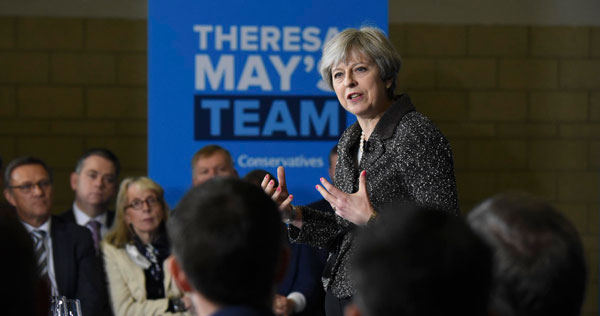
London, United Kingdom | AFP | From the shock Brexit referendum result to Tuesday’s landmark vote to reject the divorce deal struck between London and the European Union, here are the milestones on Britain’s rocky road out of the bloc after 46 years.
– Britons vote to leave –
In a referendum on June 23, 2016, Britons choose to end their membership of the 28-nation EU by 52 percent to 48 percent.
It prompts the resignation the next day of Conservative Prime Minister David Cameron, who had called the referendum and led the campaign to remain in the EU.
– May becomes prime minister –
In a race to replace Cameron, key Brexit campaigner Boris Johnson does not put himself forward as expected and Theresa May, the interior minister who had backed remaining in the bloc, becomes prime minister on July 13.
On January 17, 2017, May gives a speech setting out her Brexit strategy, saying Britain will also leave Europe’s single market in order to control EU immigration.
She warns she would be willing to walk away from negotiations with the EU, saying: “No deal for Britain is better than a bad deal for Britain.”
– Exit process triggered –
On March 13, Britain’s parliament gives final approval to a bill empowering May to trigger Article 50 of the EU’s Lisbon Treaty which lays out the process for leaving the union.
With a letter to EU President Donald Tusk on March 29 formally announcing the intention to leave, the government sets Article 50 in motion.
Its two-year timetable for withdrawal puts Britain on course to exit on March 29, 2019.
– Lost majority –
To capitalise on the perceived weakness of the main opposition Labour party and strengthen her hand in Brexit negotiations, May calls a snap general election for June 8, 2017.
Her gamble backfires as the Conservatives lose their parliamentary majority. They are forced to strike a support deal with Northern Ireland’s Democratic Unionist Party to govern.
The issue of British guarantees to keep an open border between Northern Ireland and the Republic of Ireland after Brexit becomes a key sticking point in negotiations.
– First terms agreed –
Britain and the EU reach an outline agreement on December 8 on three key areas of the divorce: Britain’s financial settlement to the union, citizens’ rights and the Irish border.
EU leaders give the go-ahead for the next stage of Brexit talks, including on how Britain will continue to trade with the bloc after the split.
A bill enacting the decision to leave the EU becomes law on June 26, 2018.
– Top ministers quit –
On July 6, 2018, May wins agreement from her warring cabinet to pursue “a UK-EU free trade area” that would retain a strong alignment with the EU after Brexit.
But two days later David Davis, the eurosceptic Brexit minister, quits saying May is giving “too much away too easily”.
Johnson, now foreign secretary, resigns on July 9, becoming a leading critic of May’s plans.
EU leaders meeting in Salzburg on September 19 and 20 tell May that her Brexit proposals are unacceptable and need to be reworked.
– Draft deal agreed –
The EU on November 13 publishes contingency plans for a “no-deal” Brexit.
But a few hours later, May’s office says negotiating teams have reached a draft agreement for the divorce.
On November 14, her cabinet backs the agreement.
However the following day four ministers, including new Brexit secretary Dominic Raab, quit in protest.
EU leaders approve the accord on November 25. “This is the only deal possible,” says European Commission President Jean-Claude Juncker.
– Confidence vote –
May’s deal faces intense criticism in parliament over the “backstop” provision designed to prevent border checks in Ireland.
On December 10, May postpones a House of Commons vote on the deal due the following day, acknowledging she faced a heavy defeat.
She heads off to Europe for further talks, but EU leaders reject any substantive renegotiation.
On December 12, May’s Conservative party announces that enough MPs are unhappy with her leadership to trigger a confidence vote.
But the embattled leader survives the challenge, securing the backing of 200 colleagues, while 117 voted against her.
– British MPs reject deal –
The House of Commons, Britain’s lower house, finally got its chance to vote Tuesday on the draft withdrawal agreement that May struck with EU leaders in December.
With opposition parties and scores of Conservatives rejecting it for various reasons, MPs voted by 432 to 202 to reject the agreement.
The government faces a vote of no confidence on Wednesday.
 The Independent Uganda: You get the Truth we Pay the Price
The Independent Uganda: You get the Truth we Pay the Price


